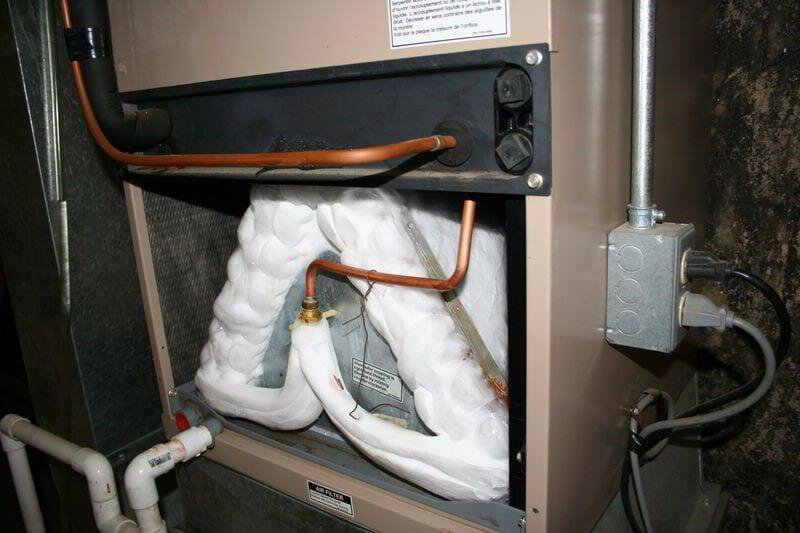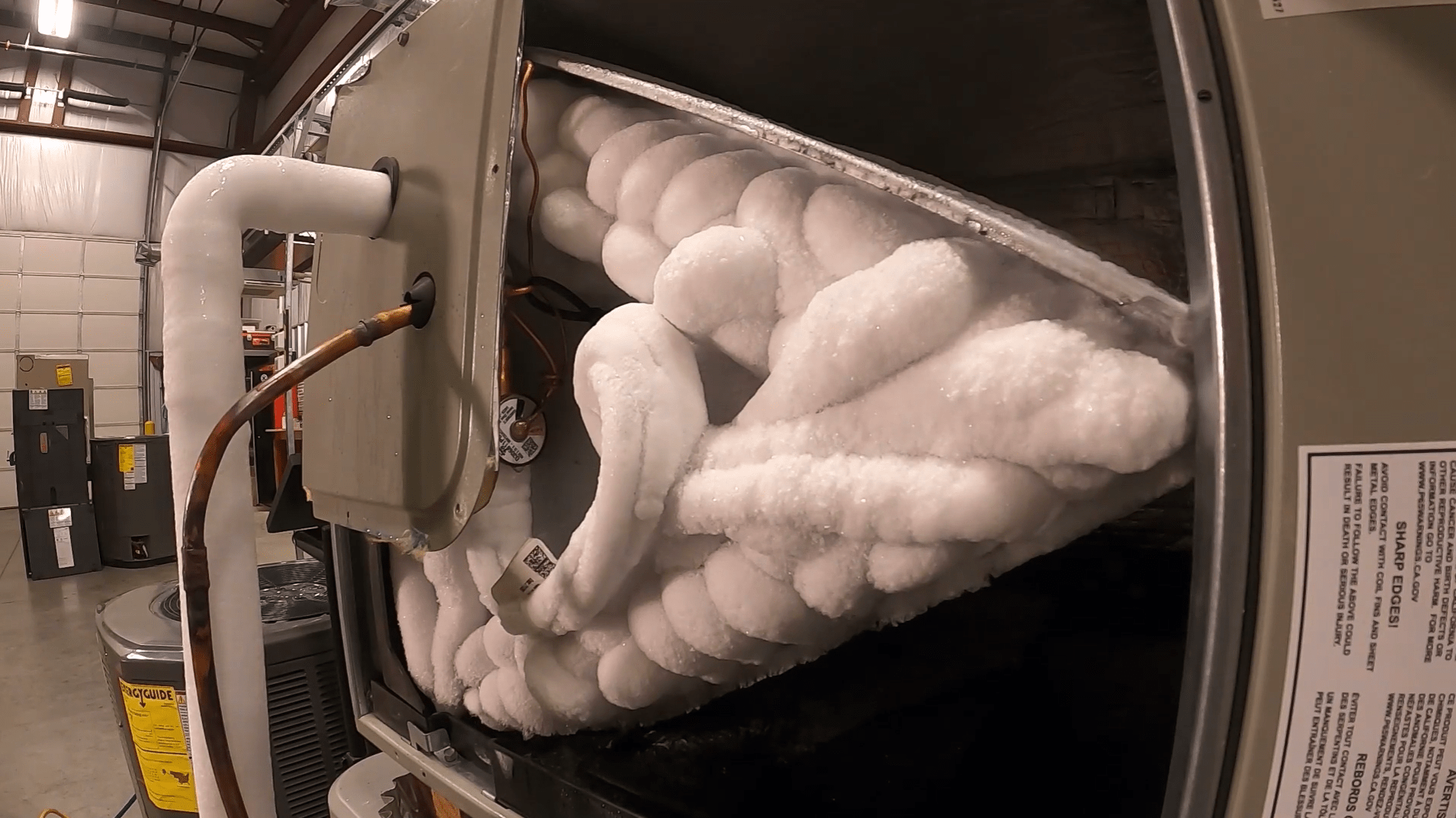Identifying a Frozen AC Pipe - Efficient Fixes for Home Air Conditioning Systems
Identifying a Frozen AC Pipe - Efficient Fixes for Home Air Conditioning Systems
Blog Article
They are making several great points on Why Is Ice On My Outside Air Conditione overall in the article followed below.

Intro
Discovering that your air conditioning pipe is frozen can be concerning, specifically throughout hot summer months when you rely upon your air conditioning unit one of the most. Recognizing what to do in such a situation is crucial to stop more damage to your air conditioning system and ensure your comfort inside.
Recognizing the Causes
Several aspects can add to the freezing of an a/c pipeline. Understanding these causes can assist you resolve the issue efficiently.
Absence of Airflow
One typical cause of a frozen air conditioning pipeline is inadequate airflow. When the air flow over the evaporator coil is limited, it can cause the coil to drop below freezing temperature, resulting in ice formation on the pipe.
Reduced Refrigerant Levels
Not enough refrigerant degrees in your AC system can likewise lead to an icy pipeline. Reduced cooling agent degrees can cause the stress in the system to go down, causing the freezing of moisture on the evaporator coil.
Winter Conditions
In colder environments, freezing temperatures outside can add to the cold of air conditioner pipes. If your AC device is not correctly shielded or if there are leaks in the ductwork, cool air can infiltrate the system, creating the pipe to ice up.
Dirty Air Filters
Filthy or clogged air filters can limit air flow in your air conditioner system, leading to different issues, consisting of an icy pipe. It's necessary to change or clean your air filterings system frequently to make sure appropriate airflow and protect against ice accumulation.
Indications of a Frozen Air Conditioning Pipe
Recognizing the signs of an icy AC pipe is vital for timely action.
Lowered Airflow
If you notice a considerable decline in airflow from your vents, it can indicate a frozen pipe.
Ice Buildup on the Pipe
Visible ice build-up on the refrigerant line or the evaporator coil is a clear indication of a frozen a/c pipeline.
Weird Sounds from the Unit
Uncommon audios, such as hissing or bubbling, originating from your air conditioner device can indicate that there's ice existing on the pipeline.
Immediate Actions to Take
When faced with an icy air conditioner pipeline, it's essential to act swiftly to stop further damages to your cooling system.
Turning off the air conditioner
The primary step is to switch off your air conditioning system to stop the system from running and worsening the problem.
Looking for Blockages
Examine the location around the interior unit for any type of blockages that may be obstructing airflow, such as furnishings or curtains.
Thawing the Pipe
You can utilize mild methods like positioning towels soaked in cozy water around the icy pipe to assist thaw it gradually.
Preventive Measures
Taking safety nets can help prevent future events of an icy air conditioning pipe.
When DIY Methods Fail
If your attempts to thaw the pipe or address various other issues are not successful, it's time to call an expert.
Value of Hiring a Professional HVAC Technician
A licensed HVAC service technician has the know-how and tools needed to diagnose and repair problems with your air conditioner system securely and properly.
Routine Maintenance Checks
Arrange regular maintenance get in touch with an expert HVAC service technician to make sure that your a/c system is running efficiently.
Altering Air Filters
On a regular basis replace or clean your air filters to stop air movement constraints and maintain ideal efficiency.
Protecting Exposed Pipes
If your air conditioning pipelines are subjected to cold temperatures, think about insulating them to stop freezing throughout winter months.
Looking For Professional Help
If DIY techniques fail to deal with the issue or if you're not sure regarding how to continue, it's ideal to seek support from a qualified HVAC professional.
Final thought
Dealing with an icy air conditioning pipe can be an aggravating experience, yet knowing exactly how to react can aid minimize damage and restore convenience to your home. By understanding the causes, acknowledging the signs, and taking punctual activity, you can successfully address the issue and avoid future incidents.
What to Do If Your AC Line Is Frozen
Make Sure All Supply and Return Air Vents Are Open
If you notice problems with airflow, the first thing you should do is check your supply and return vents. Supply vents distribute clean, conditioned air throughout your home. As this air becomes stale, it’s pulled into the return vent, where it’s reconditioned before being sent back out through the supply vent.
When these vents are closed, air won’t flow in the home. Before examining your AC, check the vents in every room and ensure they’re all open.
Check for a Dirty Air Filter
Another possible cause of limited airflow is a dirty air filter. Your air conditioner’s filters catch elements you don’t want to breathe in, such as dirt and dust. Over time, filters can become clogged, ultimately blocking air from flowing in and out. The lack of airflow can then cause the entire coil to freeze and will completely restrict any air from moving through it. The AC may need to be powered off for one to two days to allow the coil to thaw after replacing the filter to allow proper functioning of the unit. This debris can also accumulate on your AC’s evaporator coil, requiring a more serious repair. In general, air filters should be cleaned regularly (about every two weeks).
Assess Your Outdoor Unit
In addition to checking your AC, assessing the outdoor unit is a good idea. Also known as the condensing unit, it works with your interior unit to release heat outside. An issue with the outdoor unit can result in rising internal temperatures.
Overgrown Shrubs or Clogged Leaves
From leaves and twigs to shrubs and debris, there’s no shortage of outdoor elements that can accumulate around your condensing unit. When these elements get lodged inside the unit, they can block airflow. Fortunately, removing the blockage can solve the problem.
Sounds of a Broken Fan
Shrubs and leaves aren’t the only things that can impede your outdoor unit’s airflow. If the fan is broken, the unit won’t be able to properly get rid of heat — which means the internal temperature won’t go down. First, make sure the fan is spinning. If it is, check for the following sounds of a broken fan:
Buzzing Rattling Screeching Hissing Clicking Preventative Measures
Nobody wants to deal with a frozen AC line. In addition to causing problems with your air conditioner, they require professional repairs. On the bright side, there are preventative measures you can take to help ensure this issue doesn’t arise in the first place.
https://www.coopergreenteam.com/blog/what-to-do-if-ac-line-frozen

As a passionate reader on How can I fix an air conditioner’s frozen pipe?, I imagined sharing that section was really helpful. Are you aware of another individual who is fascinated by the subject? Do not hesitate to share it. I thank you for reading our article about Why Is Ice On My Outside Air Conditione.
Give Me A Quote! Report this page